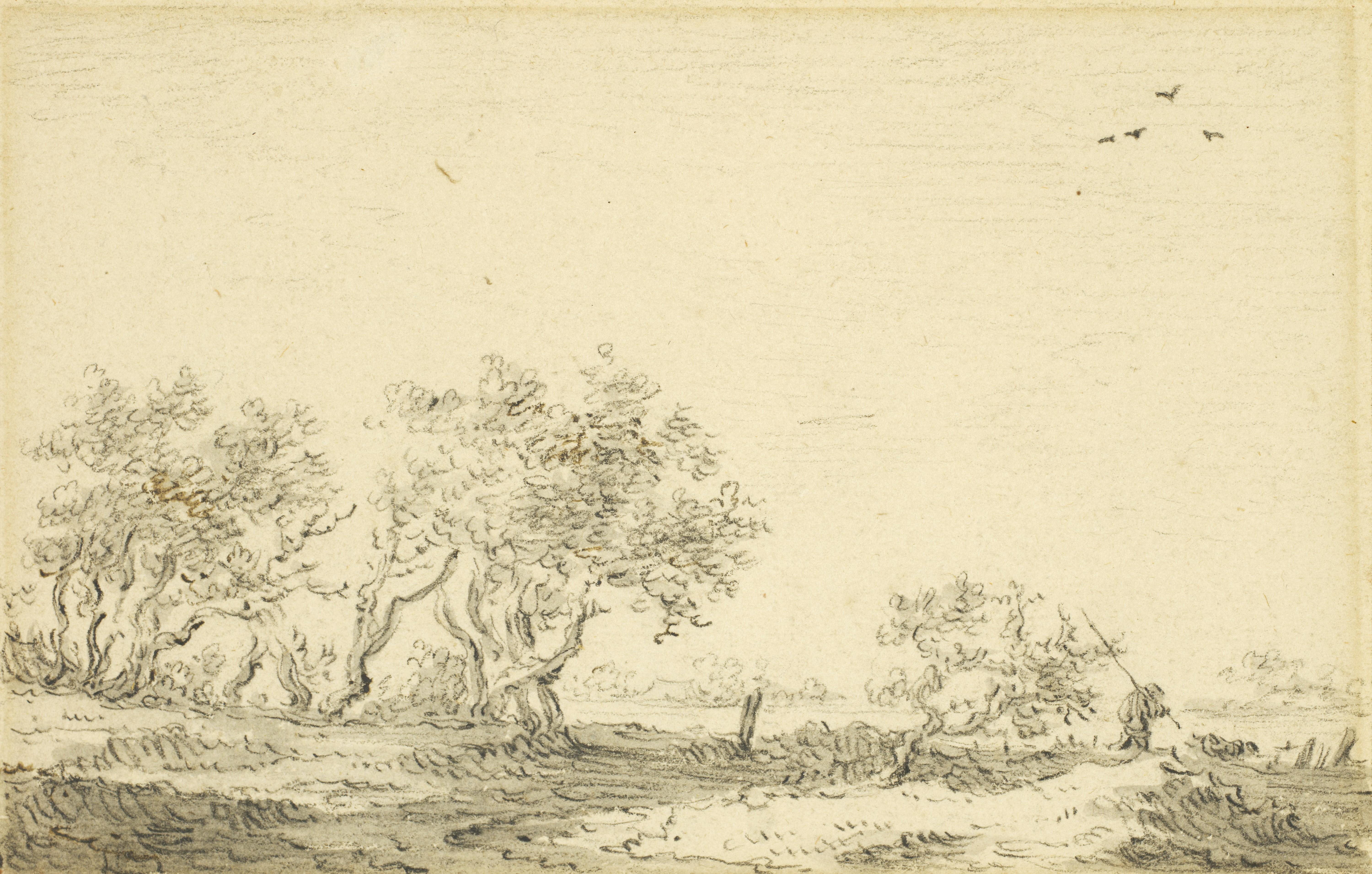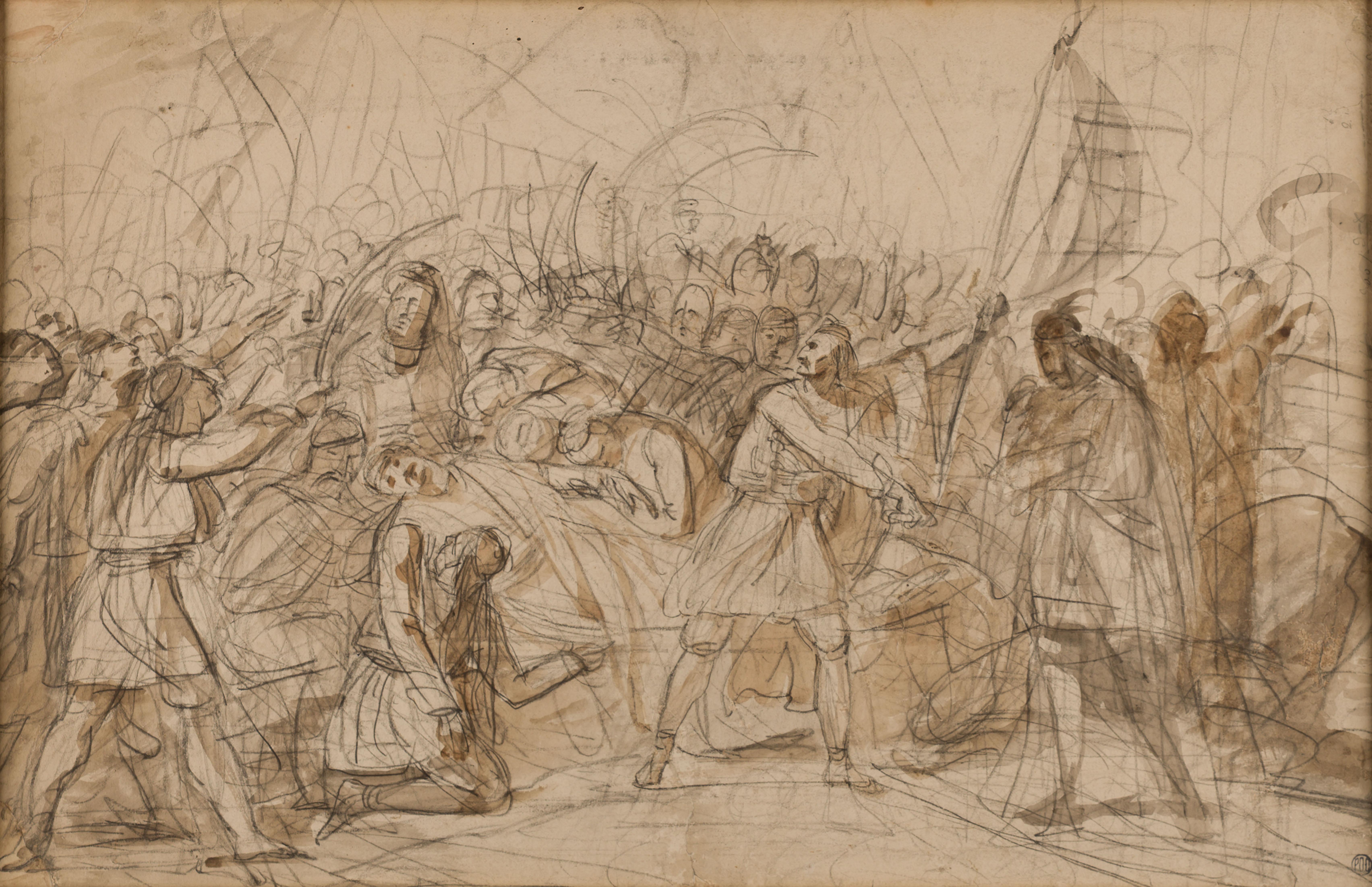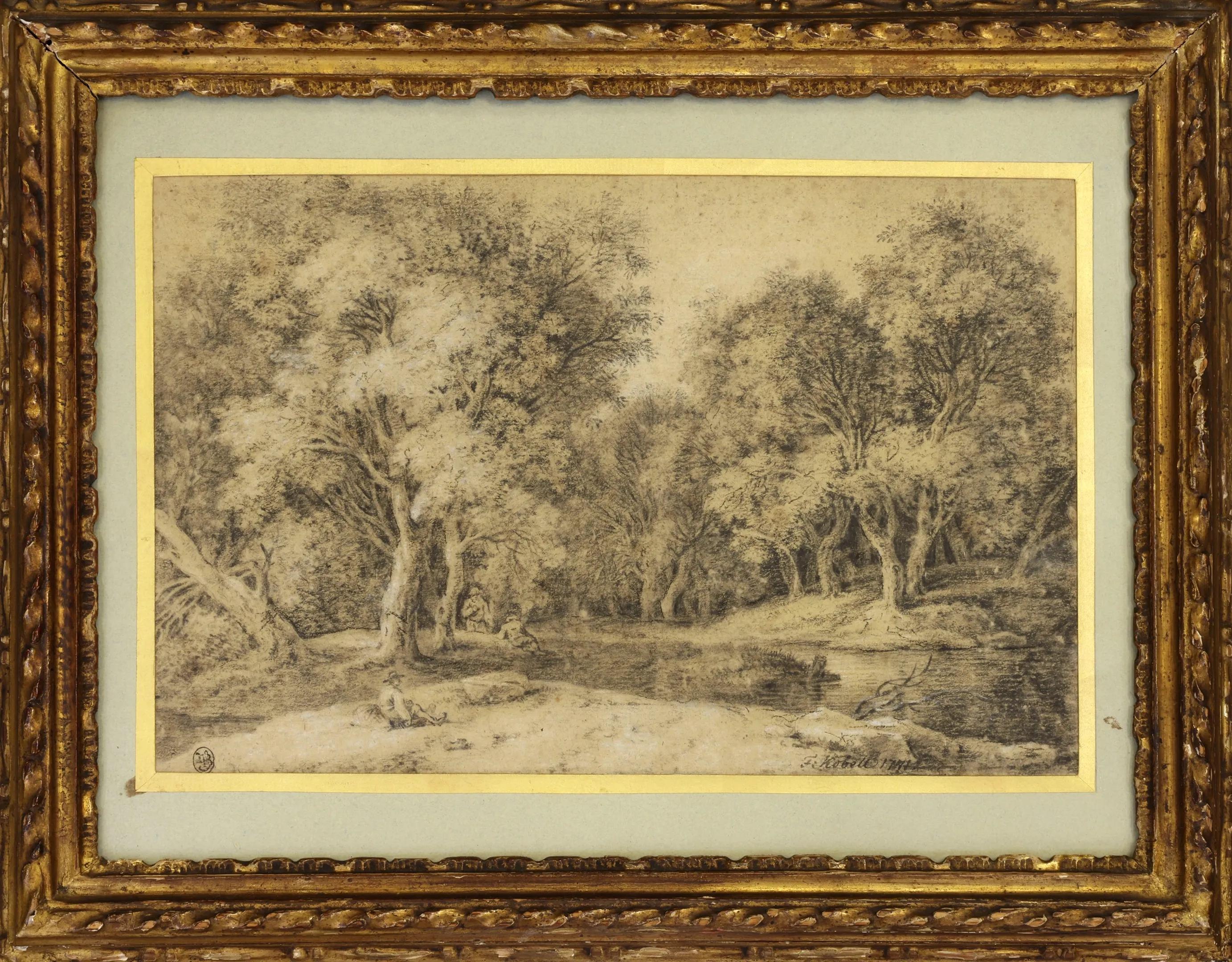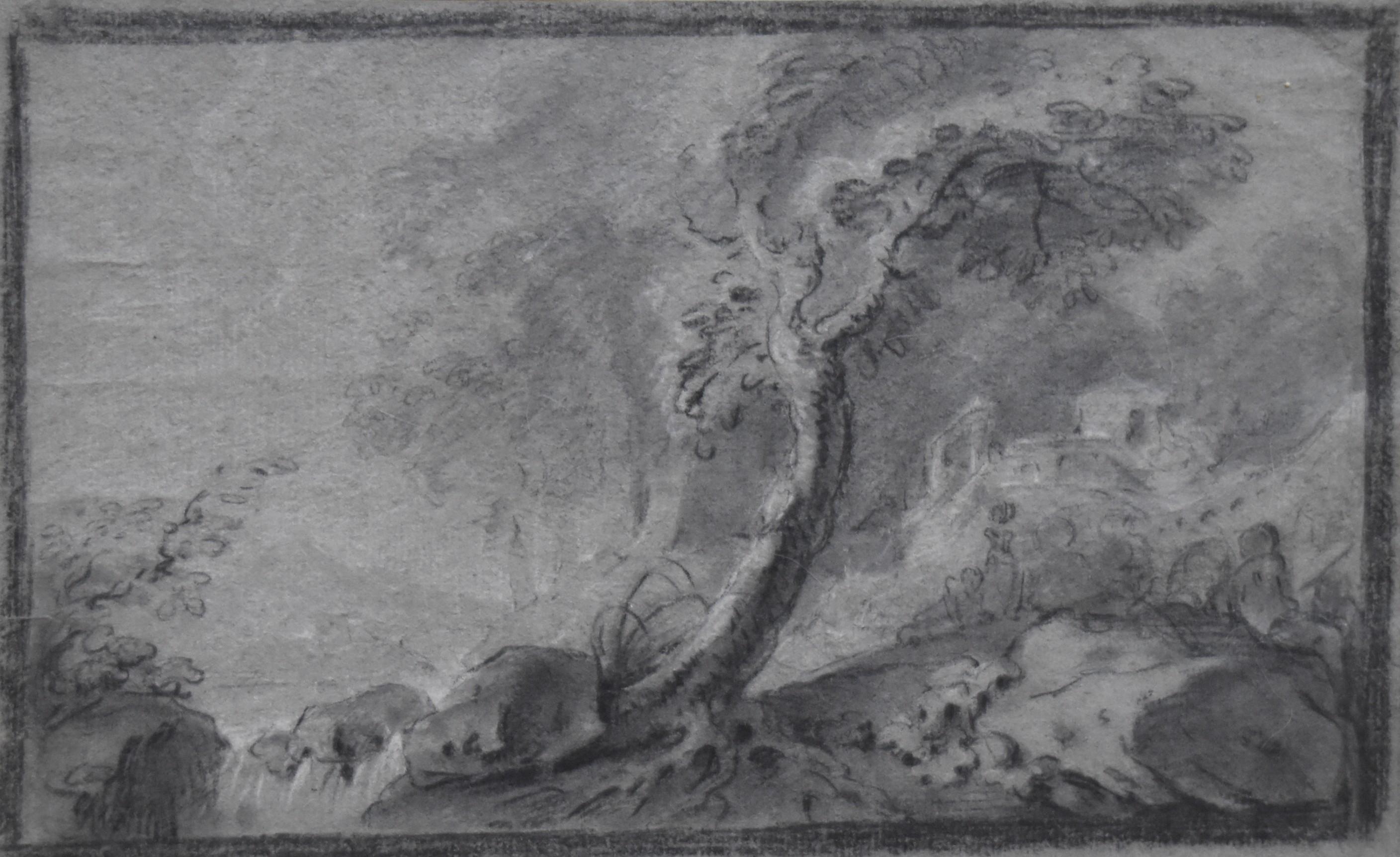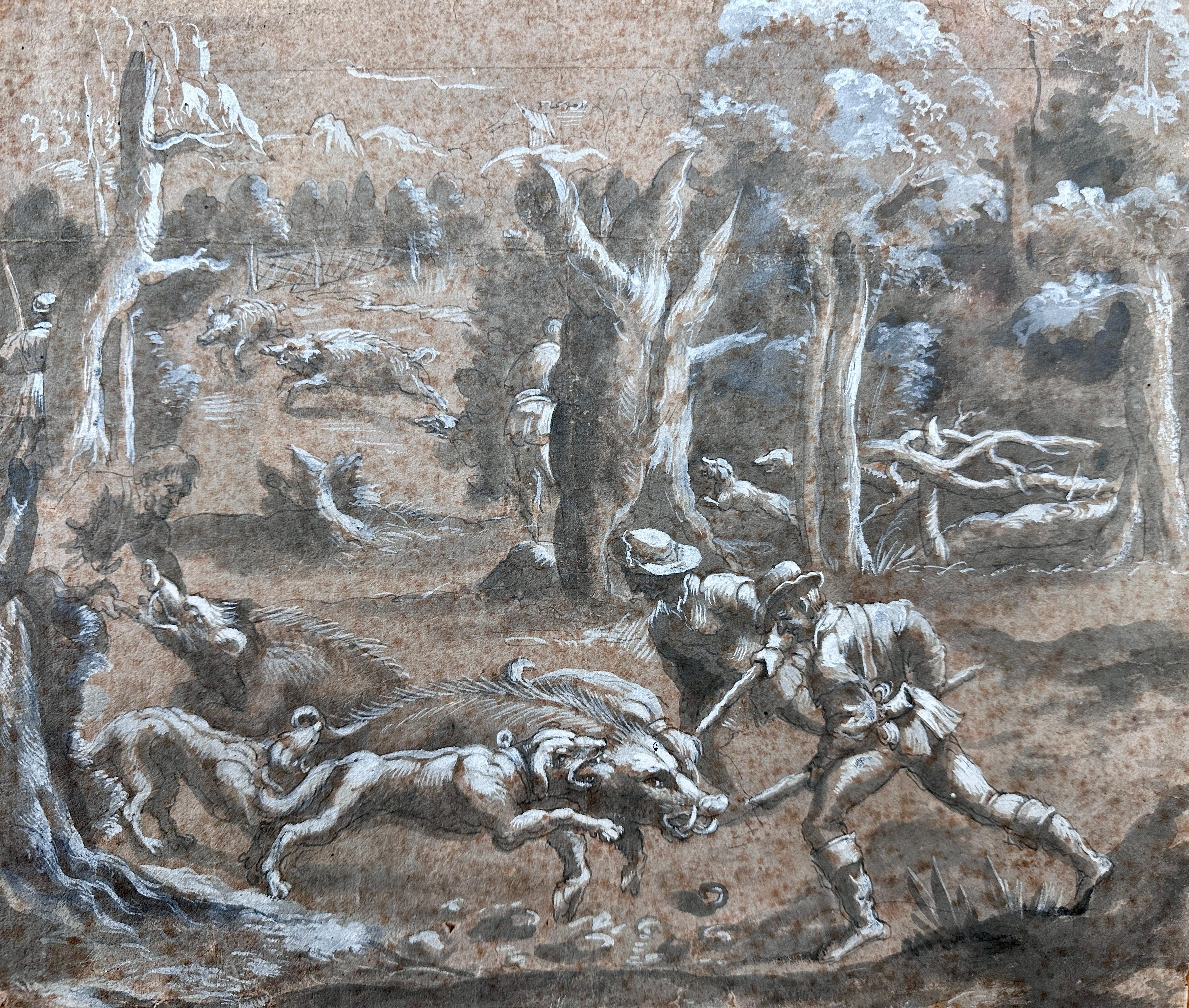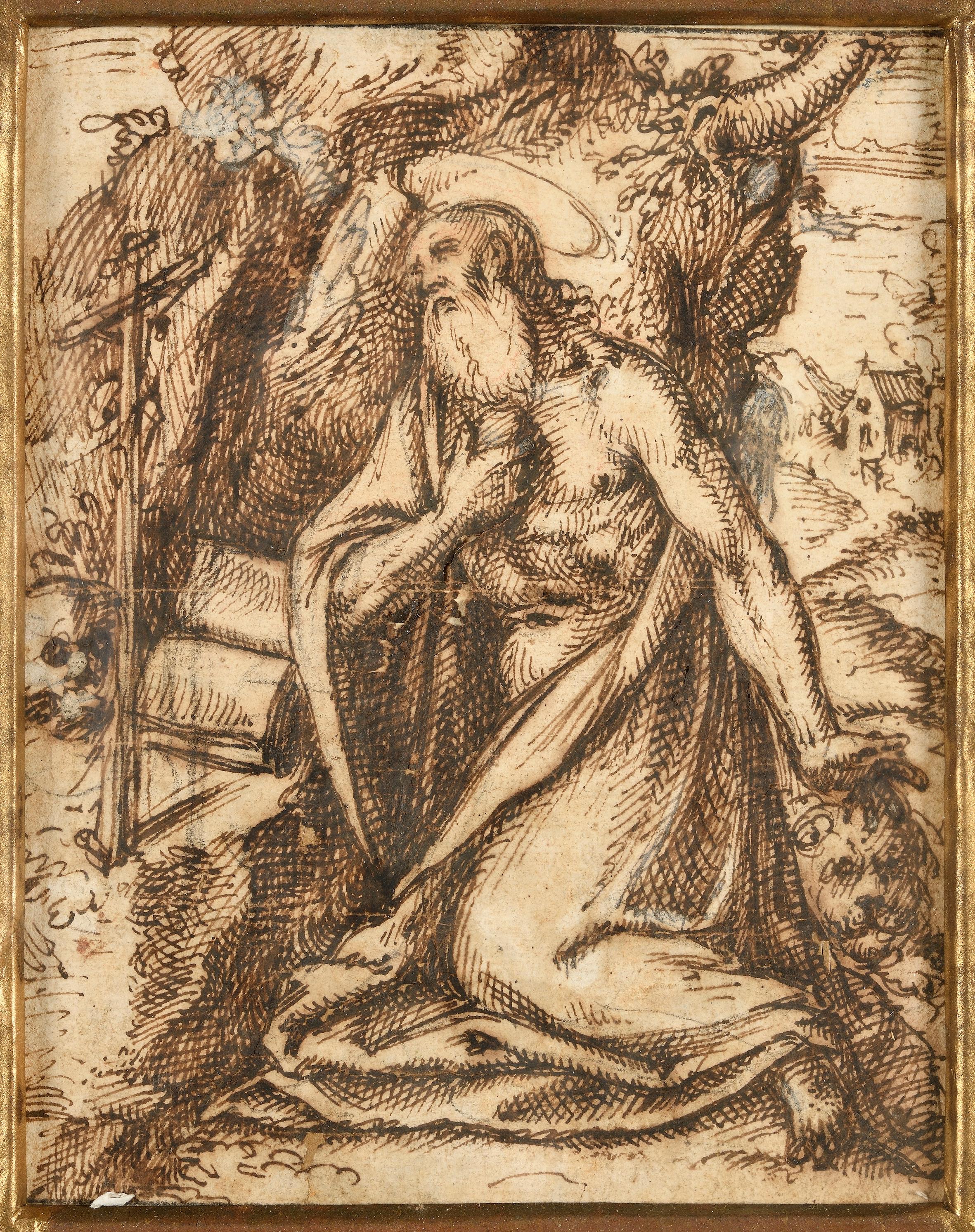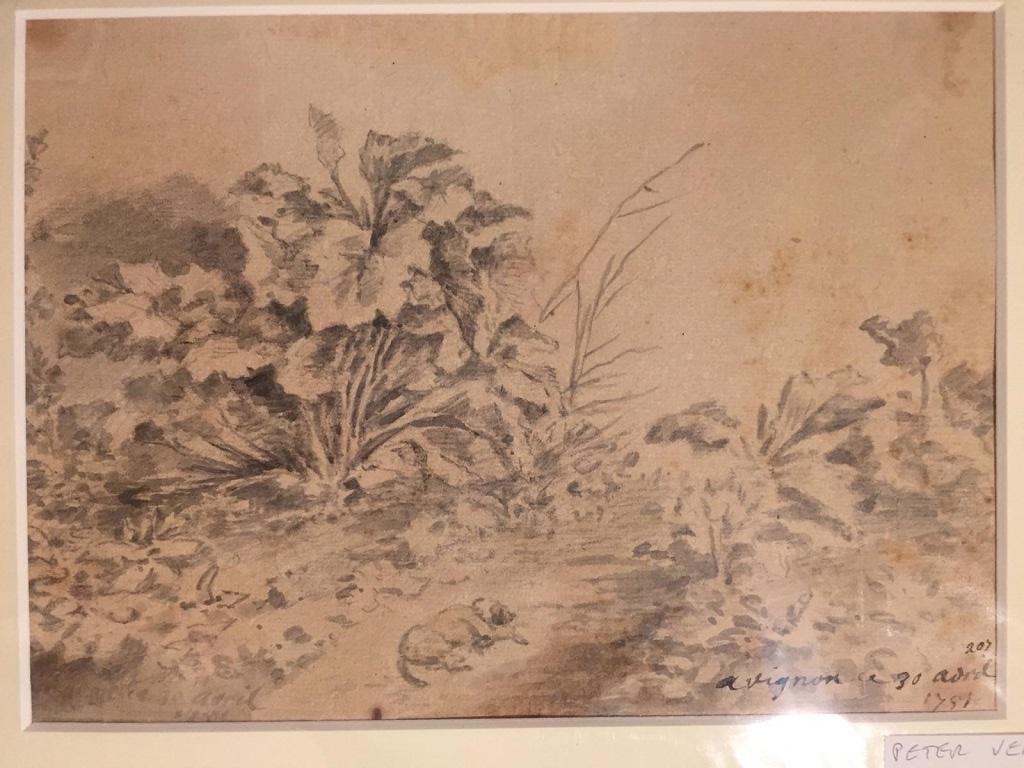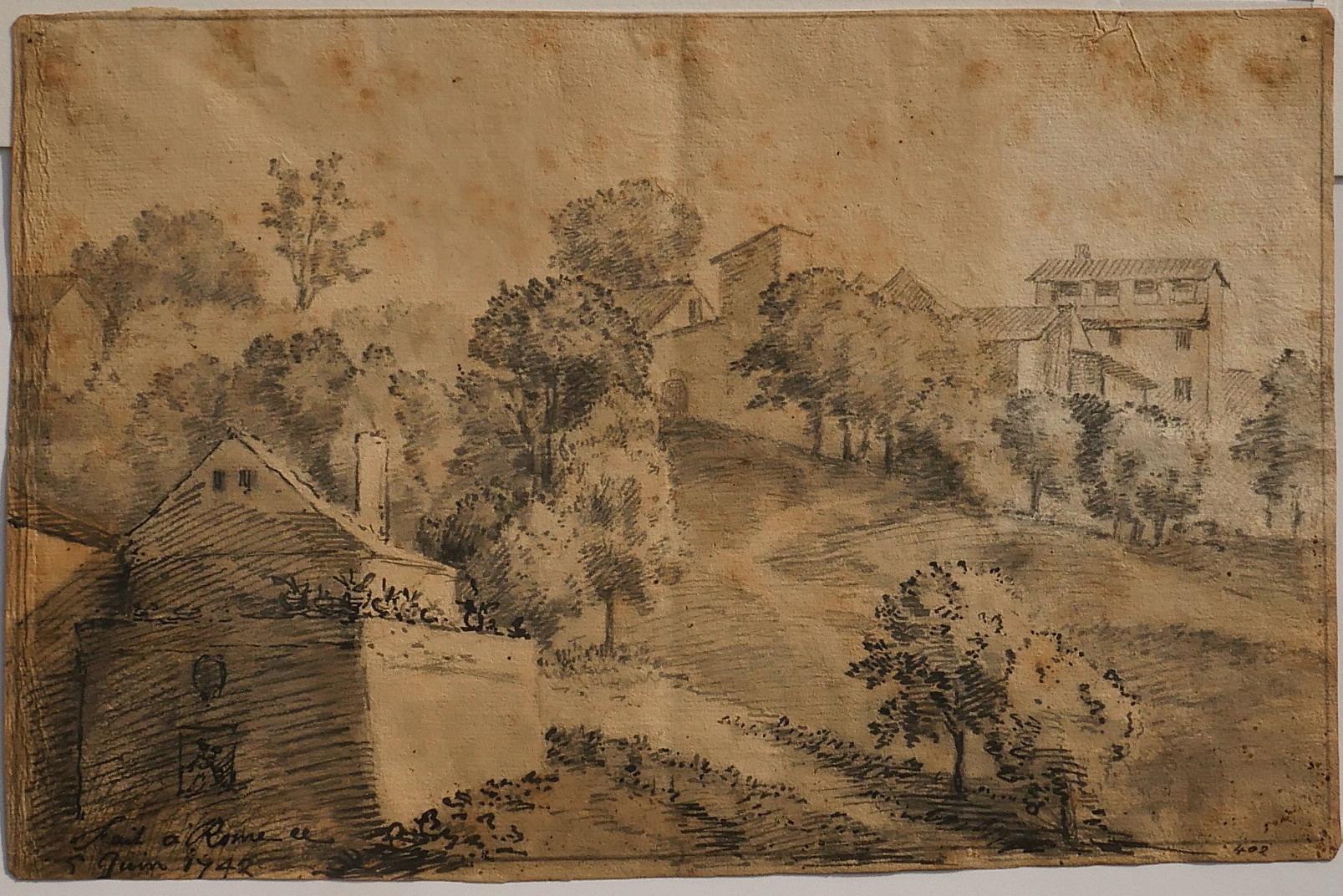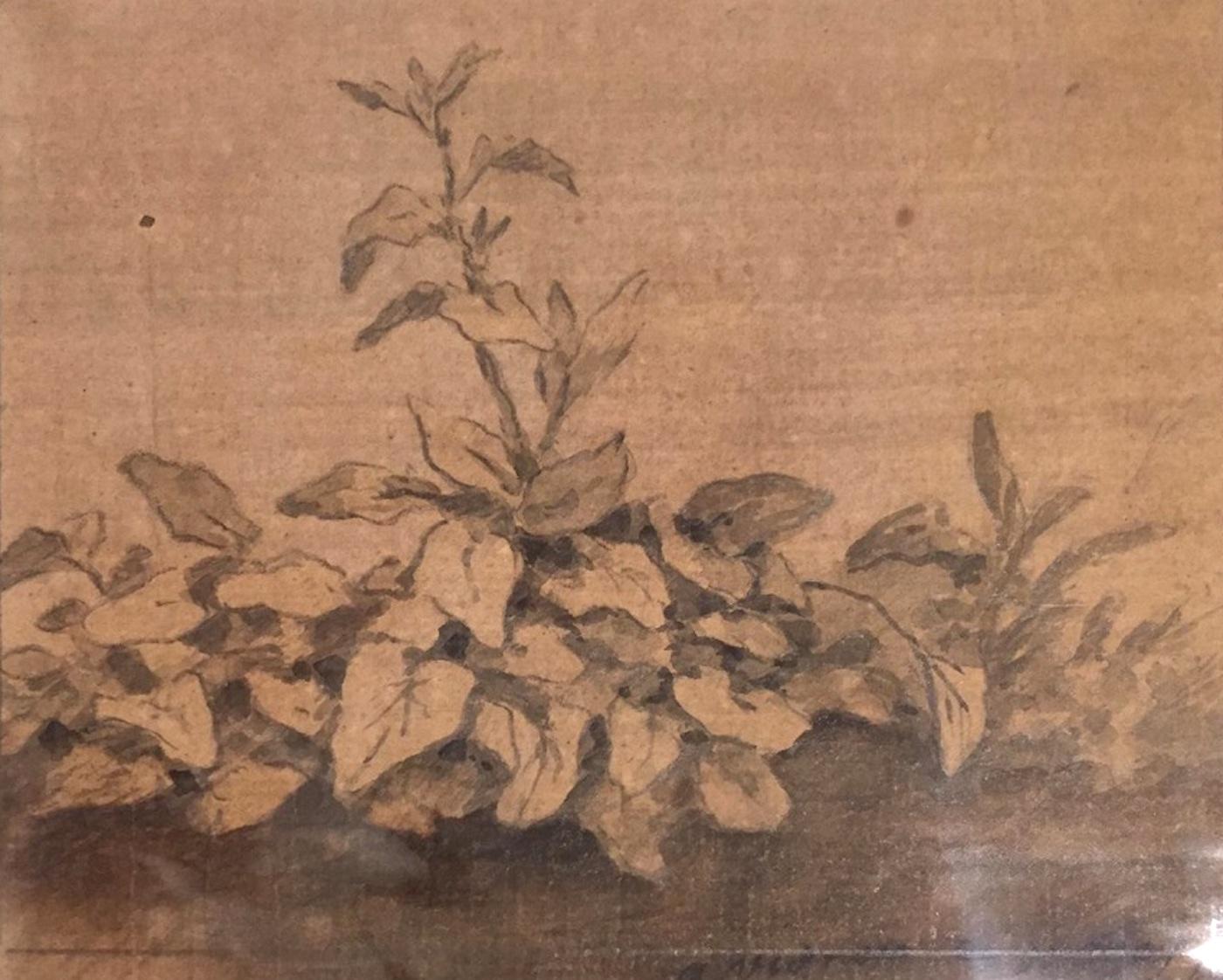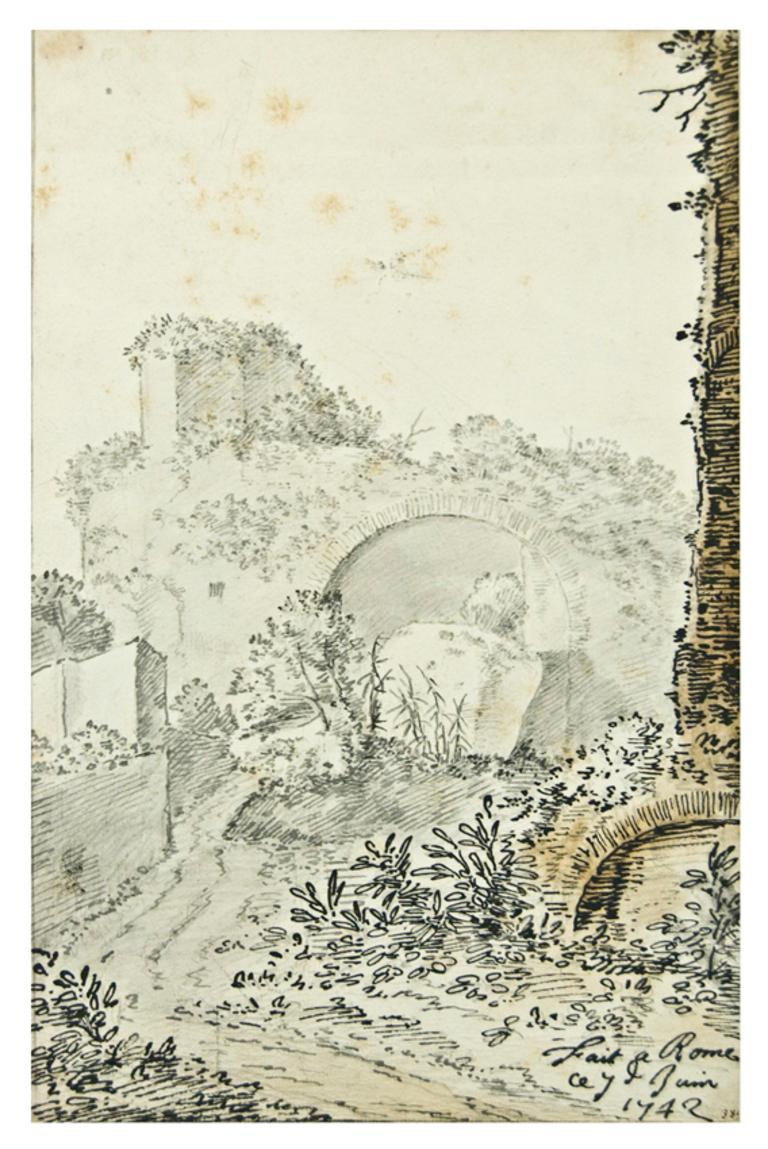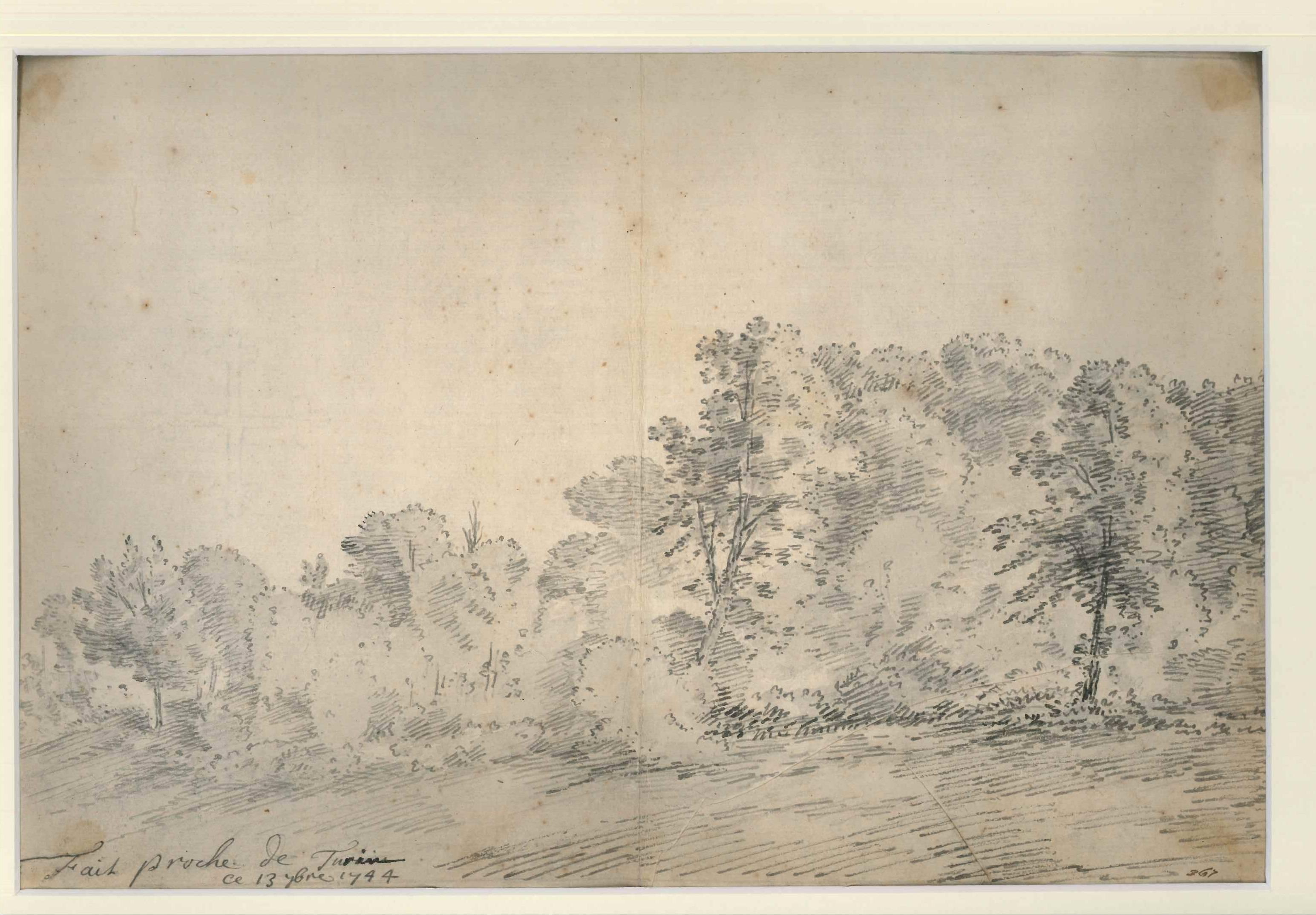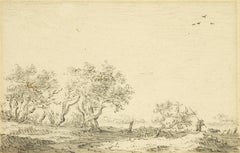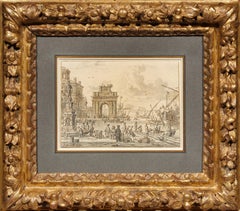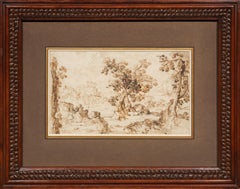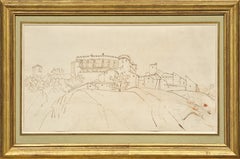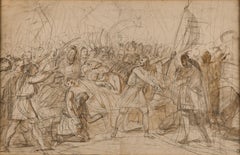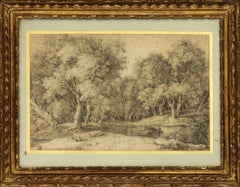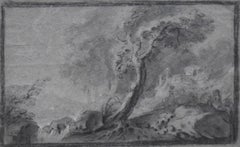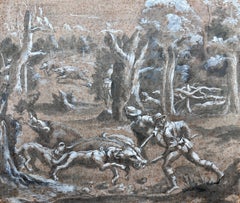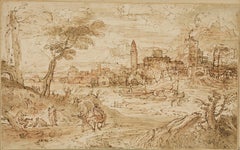
A large landscape drawing executed in Italy around 1630 by a Flemish artist
View Similar Items
Want more images or videos?
Request additional images or videos from the seller
1 of 15
Flemish School, 17th CenturyA large landscape drawing executed in Italy around 1630 by a Flemish artistCirca 1630
Circa 1630
$17,500List Price
About the Item
- Creator:Flemish School, 17th Century (1600 - 1699)
- Creation Year:Circa 1630
- Dimensions:Height: 10.25 in (26.04 cm)Width: 16.32 in (41.46 cm)
- Medium:
- Movement & Style:
- Period:Early 17th Century
- Framing:Framing Options Available
- Condition:Provenance : • Villot and Guichardot collections • Philippe Marquis de Chennevières, his mark lower right (L 2073) • His third sale from April 4 to 7, 1900 - included in lot 186 • Sotheby's sale June 30, 1986, lot 134 (as anonymous, 17th century).
- Gallery Location:PARIS, FR
- Reference Number:1stDibs: LU1568213212912
About the Seller
5.0
Vetted Professional Seller
Every seller passes strict standards for authenticity and reliability
Established in 2020
1stDibs seller since 2021
10 sales on 1stDibs
Typical response time: 2 hours
Authenticity Guarantee
In the unlikely event there’s an issue with an item’s authenticity, contact us within 1 year for a full refund. DetailsMoney-Back Guarantee
If your item is not as described, is damaged in transit, or does not arrive, contact us within 7 days for a full refund. Details24-Hour Cancellation
You have a 24-hour grace period in which to reconsider your purchase, with no questions asked.Vetted Professional Sellers
Our world-class sellers must adhere to strict standards for service and quality, maintaining the integrity of our listings.Price-Match Guarantee
If you find that a seller listed the same item for a lower price elsewhere, we’ll match it.Trusted Global Delivery
Our best-in-class carrier network provides specialized shipping options worldwide, including custom delivery.More From This Seller
View AllLandscape with Trees and a Fisherman walking, a drawing by Jan Van Goyen
By Jan Josefsz Van Goyen
Located in PARIS, FR
No Dutch draughtsman ever captured the atmosphere of the rural countryside of Holland with the same atmospheric and engaging simplicity that Van Goyen achieved in drawings such as this. Indeed, his landscapes were seminal in the development of the genre. The present sketch conveys a striking sense of movement within the natural landscape, conveyed by the deftly applied strokes of chalk, from which the artist’s hand can be sensed. The composition is characteristic of his work, with the low horizon affording significance to the broad sky and the soaring birds within. This feeling of windswept motion powerfully evokes the expansive Dutch farmland with which he was evidently preoccupied.
1. Jan van Goyen...
Category
1650s Old Masters Landscape Drawings and Watercolors
Materials
Chalk, Ink, Laid Paper
Imaginary View of an Italian Port, a signed and dated drawing by Jacobus Storck
Located in PARIS, FR
In this finely executed pen and wash drawing, Jacobus Storck presents us with an imaginary view in an Italian port. The splendor of the buildings (the large sculpted fountain surmoun...
Category
1680s Old Masters Landscape Drawings and Watercolors
Materials
Paper, Pencil, Pen, Ink
Rocky Landscape with Trees and Temple Ruins a drawing by Giulio Parigi (ca 1615)
Located in PARIS, FR
This Rocky Landscape with Trees and the Ruins of a Temple is a drawing by Giulio Parigi, an eclectic and prolific artist of the Medici court. An engraver, architect, furniture and je...
Category
1610s Old Masters Landscape Drawings and Watercolors
Materials
Ink, Laid Paper, Pen
View of a Mansion in the South of France, a drawing by Claude-Joseph Vernet
By Claude-Joseph Vernet
Located in PARIS, FR
We would like to thank Madame Beck-Saiello for confirming the autograph nature of this drawing after an in-person examination.
It was probably during an excursion in the countryside near Avignon that Claude-Joseph Vernet executed this drawing, enhanced with pen and brown ink, depicting a mansion on a hilltop overlooking a small village with geometric shapes.
1. Joseph Vernet, a painter influenced by Italy
Claude-Joseph Vernet was born in Avignon in 1714, the son of Antoine Vernet (1689-1753), an artisan painter of architectural decorations, coach panels, and the like. He moved to the studio of Philippe Sauvan (1697-1792), a leading history painter in Avignon, and then worked with Jacques Viali (active 1681-1745), a decorative, landscape, and marine painter in Aix-en-Provence. Vernet's first recorded paintings were decorative overdoors executed in 1731 in the Aix townhouse of the marquise de Simiane. In 1734, Joseph de Seytres, marquis de Caumont, a leading amateur in Avignon, sponsored Vernet to make a study trip to Italy to complete his artistic education and to draw antiquities for his patron.
As Avignon was a papal territory in Vernet's day, he also had a number of useful introductions among influential churchmen when he arrived in Rome. Vernet was soon at home in the French community there, and he was encouraged by Nicolas Vleughels (1668-1737), director of the Académie de France in Rome, even though the young painter had no official affiliation with the royal institution. He likely entered the studio of the French marine painter Adrien Manglard...
Category
1730s Old Masters Landscape Drawings and Watercolors
Materials
Ink, Laid Paper, Pen, Carbon Pencil
View of the Posillipo coastline near Naples by William Marlow (1740 - 1813)
By William Marlow
Located in PARIS, FR
In this drawing, inspired by his stay in Naples in 1765, William Marlow presents us with a view of Cape Posillipo, to the west of Naples, an essential stage during the Grand Tour. Th...
Category
1760s Old Masters Landscape Drawings and Watercolors
Materials
Ink
View of an Antique City, a wash landscape by Jan de Bisschop (1628 - 1671)
Located in PARIS, FR
The attribution to Jan de Bisschop has been confirmed by the RKD with the following comment: "We base this attribution on the dark washes, the subject represented and the monogram".
...
Category
17th Century Old Masters Landscape Drawings and Watercolors
Materials
Ink, Pen
You May Also Like
French School, early 19th century - Battle Scene between Greeks and Ottomans
Located in Paris, Île-de-France
French School, early 19th century
Battle Scene between Greeks and Ottomans, circa 1820–1830
Pencil and brown wash on paper,
30 × 46 cm
Unsigned
Provenance:
Former collection of P...
Category
Early 19th Century Old Masters Figurative Drawings and Watercolors
Materials
Chalk, Crayon
Figures by a River at the Edge of a Wood
Located in Paris, Île-de-France
Ferdinand von Kobell (1740–1799)
Figures by a River at the Edge of a Wood
Black chalk, stump and white chalk highlights, on paper
19 x 28.8 cm
Signed and dated lower right: 1777
P...
Category
Late 18th Century Old Masters Landscape Drawings and Watercolors
Materials
Chalk
France 18th Century, Pastorale (Arcadian Landscape), original drawing
Located in Paris, FR
France 18th Century,
Pastorale (Arcadian Landscape)
Black chalk and heightenings of white gouache on blue-grey paper
19 x 31 cm
Framed : 34.5 x 46.5 cm
The atmosphere and the subje...
Category
1760s Old Masters Landscape Drawings and Watercolors
Materials
Chalk
$1,021 Sale Price
20% Off
Hunting Scene
By Jan Van der Straet
Located in Paris, Île-de-France
Attributed to Jan VAN DER STRAET, called Stradanus (Bruges, 1523 – Florence, 1605)
Hunting Scene
Pen and brown ink, brown wash and white heightening on prepared brown paper,
26 × 31 cm
Unsigned
Provenance
Private collection, France
This striking and highly accomplished drawing depicts a wild boar hunt in a wooded landscape, animated by numerous figures and animals. The dramatic energy of the foreground, where hounds and hunters engage the beast, is heightened by the bold use of white heightening, which models the forms and enlivens the surface. The background, structured by tall trees and populated with additional hunting scenes, lends the composition a theatrical depth.
Attributed to Jan van der Straet, known as Stradanus, this work belongs to the artistic context of Medicean Florence, where the artist developed an important body of hunting scenes intended for illustration and engraving. Influenced by Italian Renaissance models as well as his native Flemish culture, Stradanus excelled in dynamic storytelling and elegant draftsmanship.
The drawing may have been a preparatory study for one of the compositions from the celebrated Venationes Ferarum, Avium, Piscium series, engraved in Antwerp under the supervision of Philips Galle...
Category
16th Century Old Masters Animal Drawings and Watercolors
Materials
Ink
$7,794
Saint Jerome Praying, with a Landscape in the Background
Located in Paris, Île-de-France
STEFANO DALL’ARZERE
(Padua, circa 1520 – 1570)
Saint Jerome Praying, with a Landscape in the Background
Pen and brown ink, heightened with white over black chalk lines
15.5 x 12 cm...
Category
16th Century Old Masters Landscape Drawings and Watercolors
Materials
Ink
Dog with Plants - Original China Ink Drawing by Jan Pieter Verdussen - 1751
By Jan Pieter Verdussen
Located in Roma, IT
Dog with plants in the garden is a beautiful artwork realized by Jan Peter Verdussen in 1751.
pen and watercolour on brown paper. In good codition except for some pencil marks and t...
Category
Mid-17th Century Old Masters Landscape Drawings and Watercolors
Materials
Paper, Ink
Recently Viewed
View AllMore Ways To Browse
School Bell Antique
Charles Mason
Tree Trunk Cabinet
Smoking Cabinet
Antique Lead Soldier
Cirque Antique
Antique Dutch Trunk
Laurence Hope
Venetian Black Moors
Justin Faivre
Louis Vuitton Recto Verso Black
Maria Ada Gianni
Nestor Fruge
Occult Geometry
Paintings Robin Hoods Bay
Rothenburg Tauber
Stephen Cox
Thomas Tyndale
